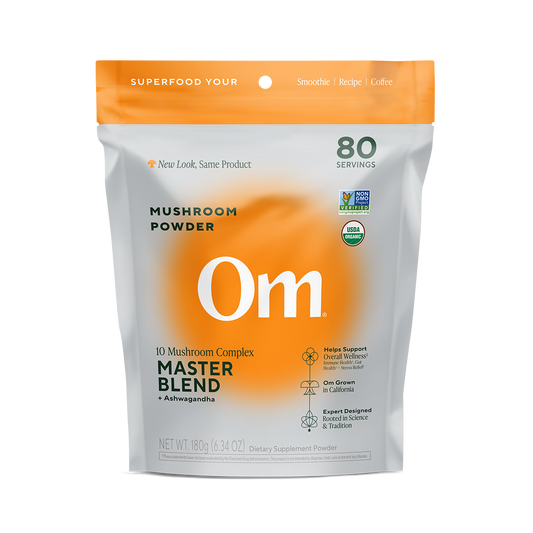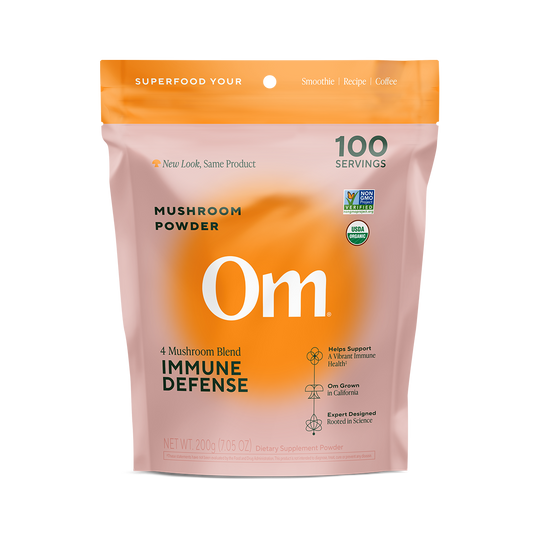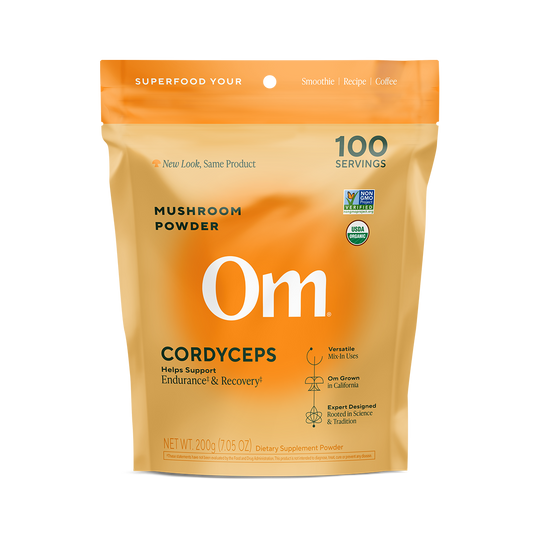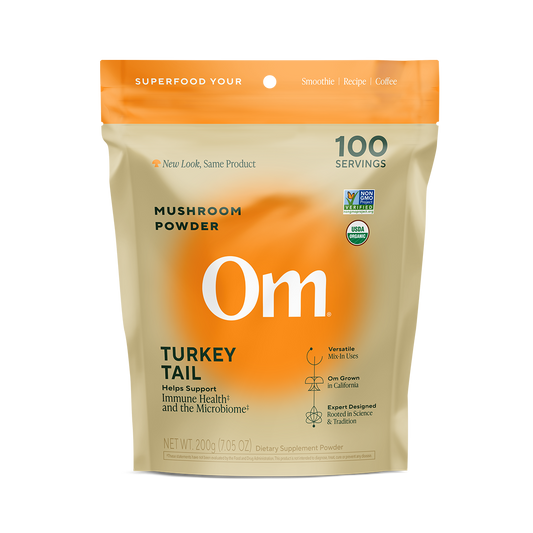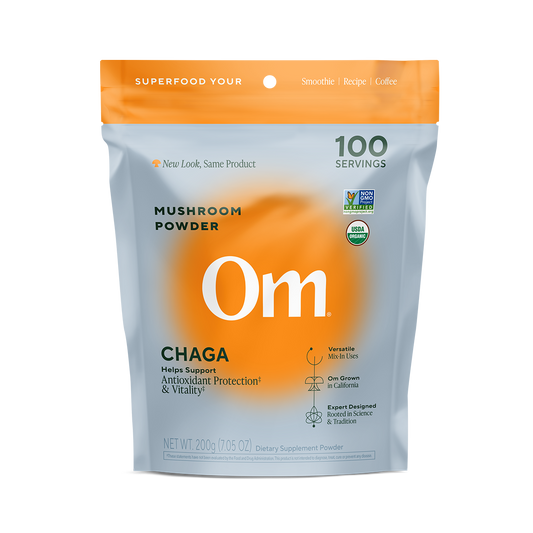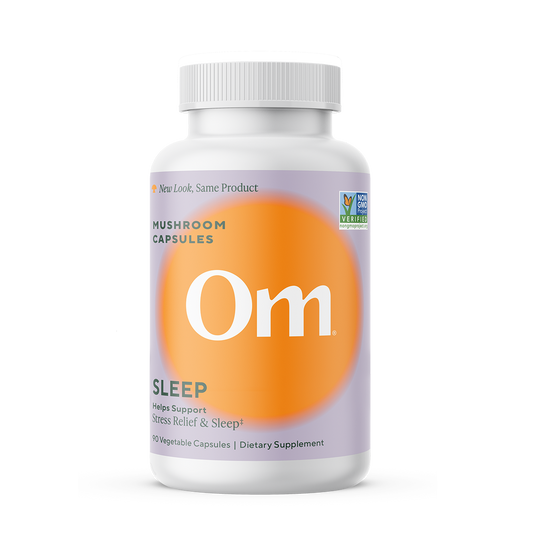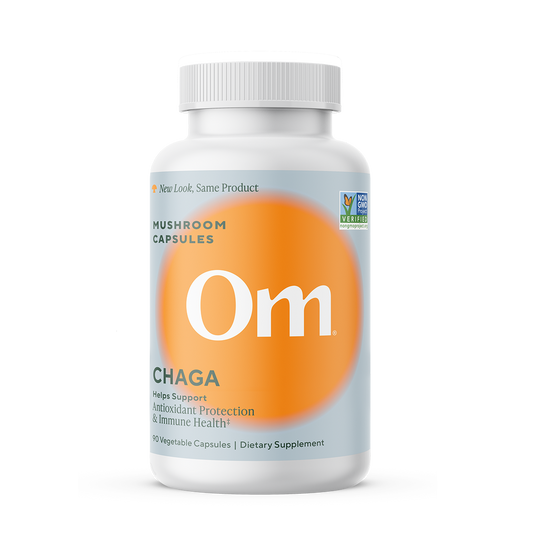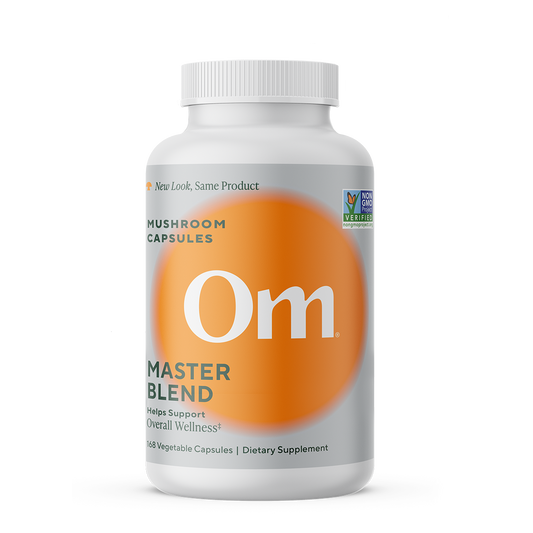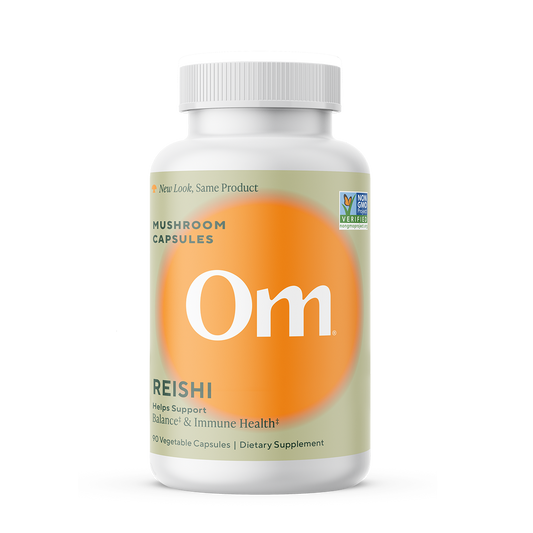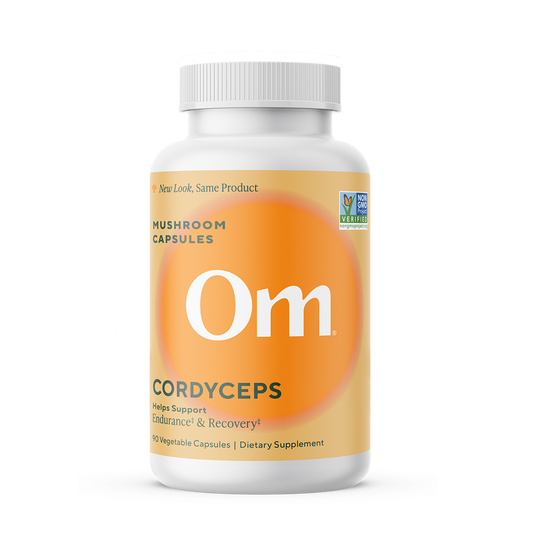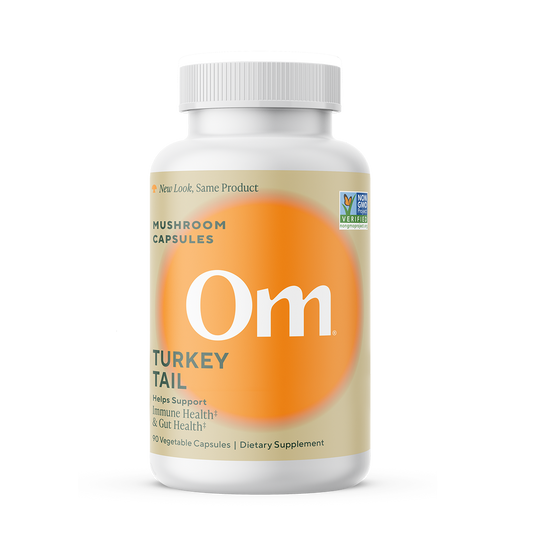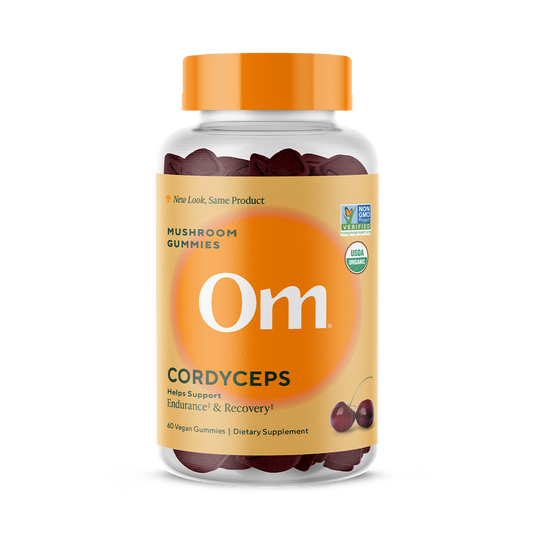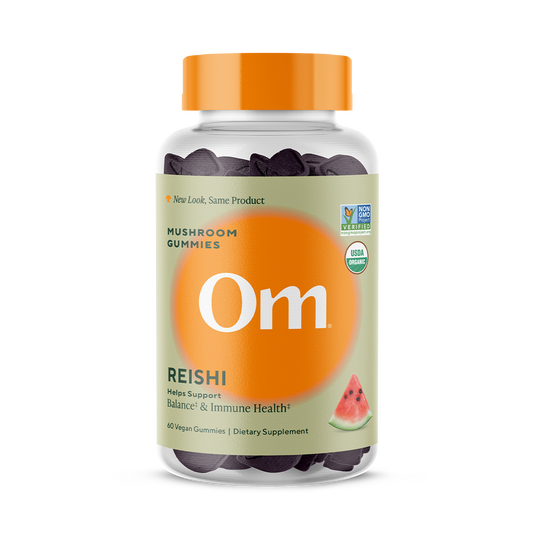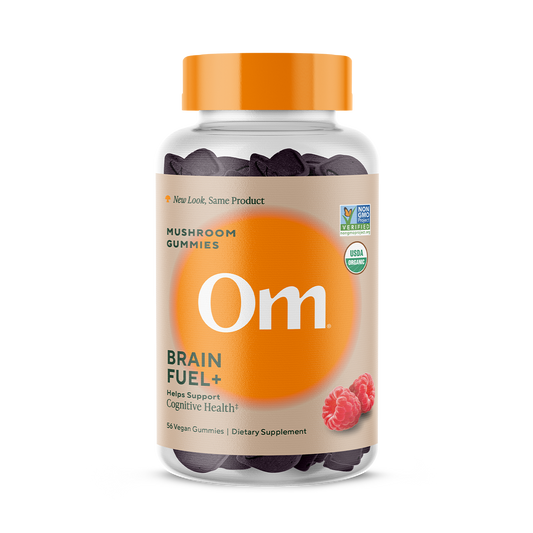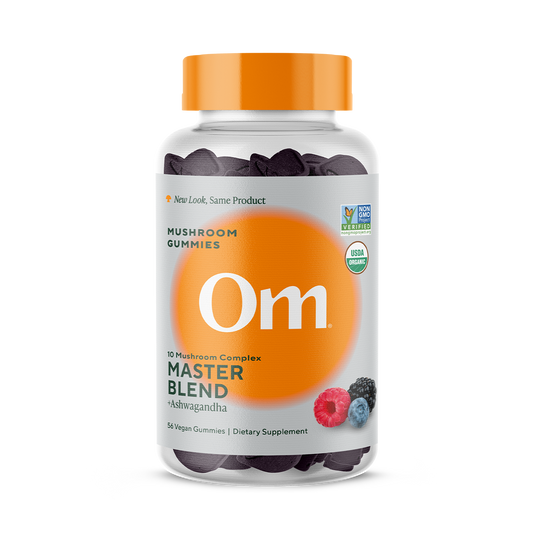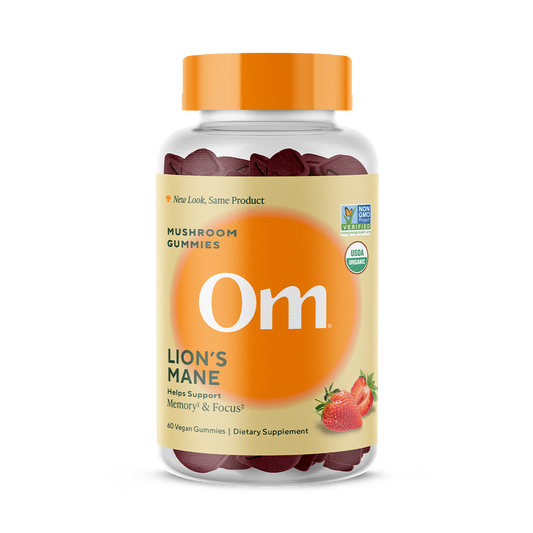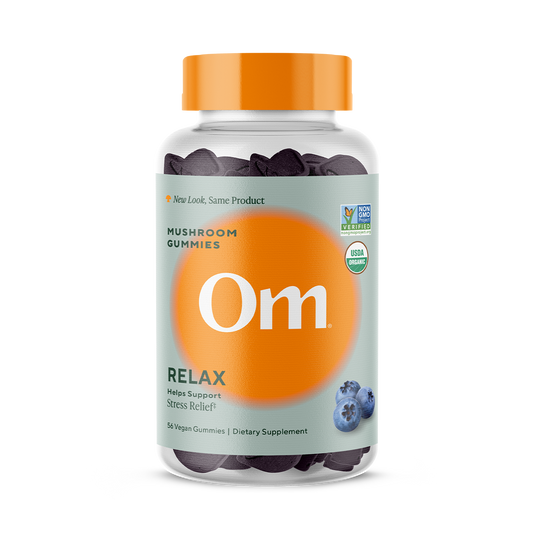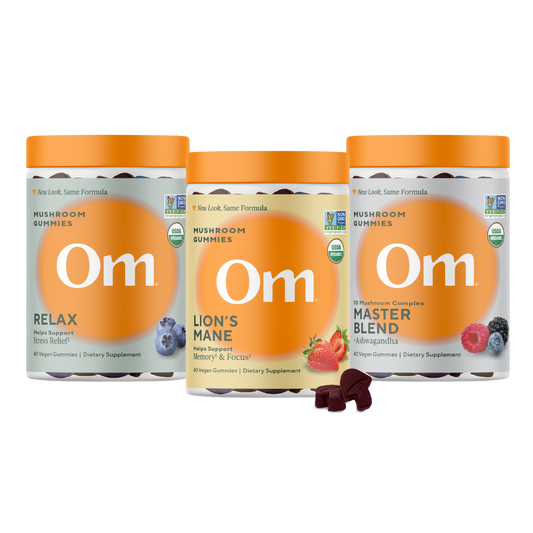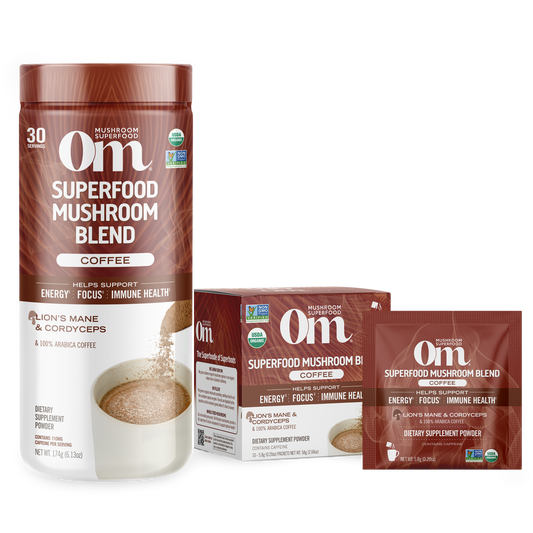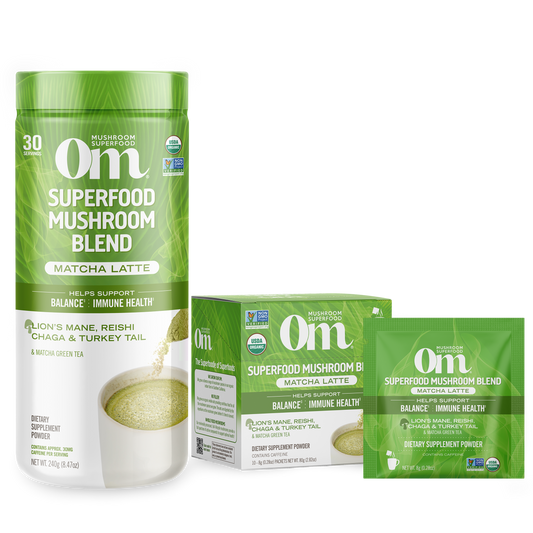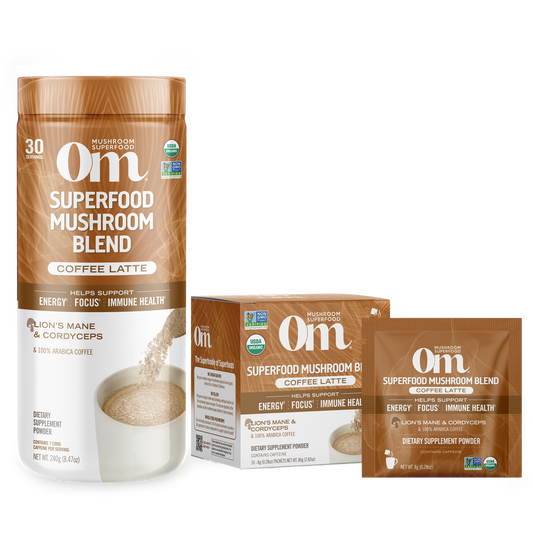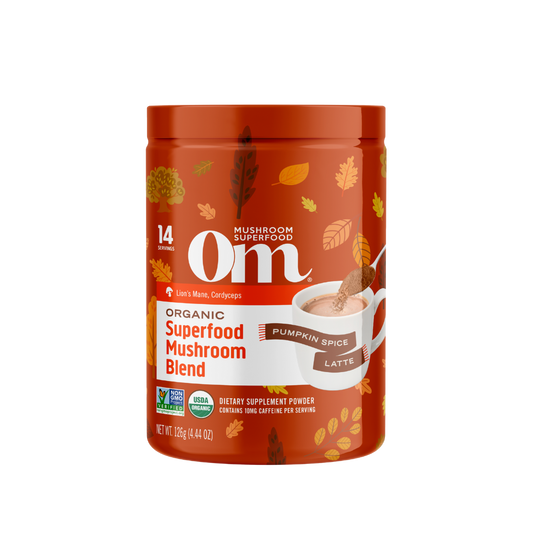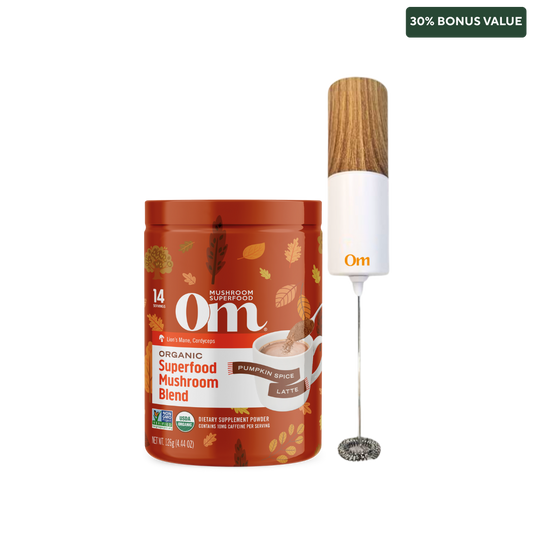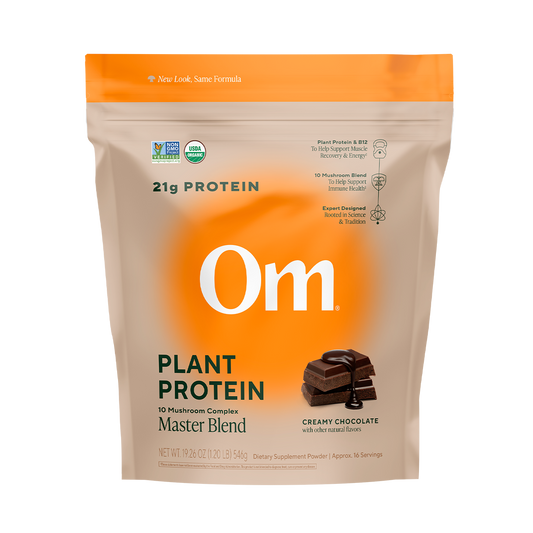Dispelling Myths
Mushroom supplement info can be confusing. Knowing the life cycle and cultivation helps you choose wisely.
-
Products containing the mycelium are just “a bag of rice or oats”
While some mushrooms are cultivated on an edible substrate of organic rice or oats, that does not mean that the finished product contains rice or oats, at least not in the same form. As mushroom mycelia (the plural of mycelium) grow, they feed on and break down the nutritive substrate of the oats. Oats nourish the mycelia as they progress to the next stage of development.
By the time the whole mushroom—fruiting body and mycelium—are harvested, the oats have been almost completely digested and converted into fungal tissue and metabolites. Growing mushrooms on an edible substrate allows all parts of the mushroom’s life cycle to be used, including the:
- Fruiting body
- Mycelium
- Extracellular compounds produced by the mycelium that diffuse into the substrate (enzymes, polysaccharides, secondary metabolites)
- Myceliated substrate (an inseparable matrix of mycelium and remnants of the fermented, enzymatically-converted oats that the mushrooms were grown on)
-
The fruiting body alone is the most beneficial part of the mushroom
When we think about a mushroom, most picture the fruiting body, which consists of the stalk, cap, and gills. However, under the surface, there is a root-like structure called the mycelium. Both the fruiting body and the mycelium contain beneficial bioactive compounds. In some cases, like with the lion’s mane mushroom, these compounds are exclusive to either the fruiting body or the mycelium, so getting the full benefit requires the consumption of both parts.‡
-
The mycelium alone is the beneficial part of the mushroom
While a mushroom’s mycelium contains a wealth of beneficial substances, some bioactive compounds are unique to or more plentiful in the fruiting body. The reishi mushroom provides a good example. The mature fruiting body contains higher levels of triterpenes, compounds that support the body’s immune system and response to inflammation. Getting the full benefit of these antioxidants occurs when the fruiting body, as well as the mycelium, are consumed.‡
-
USA-grown mushrooms are not real functional mushrooms
With the help of mycologists—scientists who study fungi—many species of functional mushrooms are now successfully cultivated in specialized indoor farms in the United States. By controlling every aspect of the mushroom growing process from start to finish, Om Mushroom facilities, for example, are designed to ensure functional mushrooms are free from contaminants and their operations comply with the BRC Global Standard for Food Safety (BRCGS). As the only mushroom supplier to receive the BRCGS AA Audit Rating, Om Mushrooms adheres to the highest standards across all operational, food safety, and quality controls. This recognition means Om Mushrooms exceeds an unparalleled level of safety, integrity, legality, and quality among peers in the food and food ingredient manufacturing, processing, and packing industry.
Reports indicate that shipments of mushrooms and other food products from certain regions have been frequently rejected by regulatory bodies due to recurring issues such as:- Contamination with pathogens: Such as Listeria and E. coli.
- Unacceptable levels of heavy metals and pesticides: Exceeding permissible limits set by regulatory agencies.
- Presence of contaminants: Including foreign matter like insects, dirt, and other contaminants.
These findings raise questions about the overall quality and safety of products originating from regions with less stringent food safety regulations. https://pmc.ncbi.nlm.nih.gov/articles/PMC8778862/
-
A mushroom extract is superior to an unextracted whole mushroom product
Many mushroom extracts undergo a single or dual extraction process in water or alcohol to capture specific chemical compounds. During the extraction process, specific compounds may be captured but other nutrients and bioactive compounds that are often found within the whole mushroom may be lost with the strained solids. If certain specific nutrients are desired, an extract may be an acceptable way to access them.
Mushroom powders undergo less processing when the whole mushroom—mycelial biomass and fruiting body—is dried and powdered. More nutrients, including prebiotic fiber, remain available since the mushroom’s original qualities are preserved. With less processing, mushroom powders provide a broad range of bioactive compounds.‡
Fruiting Body
Mycelium
Fruiting Body
- The thick, supporting walls of the fruiting body contain prebiotic fiber that supports gut health.‡
- Fruiting bodies contain vital nutrients (protein, fiber, vitamins, and minerals) in varying amounts according to the species and growing conditions.‡
- Fruiting bodies of various mushroom species may contain bioactive compounds (polysaccharides, indoles, polyphenols, and carotenoids) that have antioxidant and anti-inflammatory properties.‡
- Fruiting bodies are a good source of macrominerals: potassium, calcium, phosphorus, and magnesium, as well as trace minerals, including copper, iron, selenium, and zinc. They are low in sodium.‡
- The fruiting bodies of some species contain active ingredients not found in their mycelia.
- Fruiting bodies lack the powerful extra-cellular components of the mycelia.
Mycelium
- In general, mycelia have thinner, permeable cell walls that allow enzymes to pass out and nutrients to be absorbed. For this reason, mycelia are easier for people to digest.
- The mycelium serves the majority of functions in the mushroom’s life cycle, including the production of enzymes to digest nutrients in its environment, protection against competitive or damaging organisms, and generation of fruiting bodies. It endures even after the fruiting body has faded.
- Fermentation using a solid substrate supports the cultivation of mycelial mass by simulating its growth in its natural environment. This controlled system makes it easier to exclude contaminants that would necessitate high-temperature processing that could inactivate nutrients.
- Some mycelia contain beneficial nutrient compounds not found in their fruiting bodies.
- Organic matter (also known as the mycelial biomass) is composed of the mycelium and its supporting substrate that contains extracellular compounds including enzymes, polysaccharides, and protective secondary metabolites that may provide therapeutic benefits.‡
- Mushroom mycelia are harvested for use as dietary supplements and healthy additives.



















